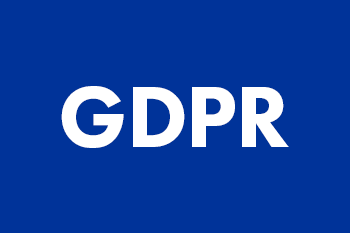
Coaching is a powerful tool for promoting mental clarity within a team. By identifying strengths, and weaknesses, setting goals, and developing strategies, coaches help team members stay focused, and motivated to achieve them.
Leaders who prioritize mental clarity in coaching avoid undesirable outcomes such as low employee engagement, subpar results, and a lack of initiative. These issues often stem from a lack of clarity, which is a common problem in many organizations.
The tip this week for creating a high-performance team is to embrace coaching to build mental clarity within your teams. Investing in coaching and creating a culture of mental clarity, leaders help their teams achieve success and reach their full potential. This requires identifying the root cause of common problems and taking proactive steps to foster mental clarity within the team.
Reasons Coaching Creates Mental Clarity in Teams
Coaching revolves around asking probing questions that delve into a problem or difficulty, leading to a clearer understanding and uncovering new possibilities. The potency of the questions asked leads to robust solutions. As you implement coaching, you will not only help others grow but also expand your own abilities, allowing you to delegate tasks that no longer warrant your attention. This provides you with the opportunity to take on challenging and significant projects that will advance your career.
1. Improved communication and collaboration among team members
With clear coaching direction, team members are more likely to communicate effectively, share ideas, and contribute to problem-solving efforts. Collaboration enables team members to leverage their collective knowledge and expertise to achieve better outcomes than any individual could on their own. Effective communication also helps to build trust and rapport among team members, promoting a positive team dynamic and fostering a culture of mutual support and respect.
2. Enhanced self-awareness and emotional intelligence
Coaching creates enhanced self-awareness and emotional intelligence in teams by providing clarity about their roles and responsibilities, leading to a better understanding of strengths and weaknesses. This understanding allows team members to manage their emotions, resulting in greater emotional intelligence critical for effective collaboration and communication. With emotional intelligence, team members navigate conflicts, build trust, and create a positive team culture, leading to better outcomes for the team.
3. Increased motivation and engagement
Coaching creates increased motivation and engagement among teams by providing clarity about their roles, responsibilities, and goals, which creates a sense of purpose and direction. This clarity leads to a feeling of ownership and accountability for their work, resulting in increased engagement and investment in the team’s success. Additionally, clarity helps to reduce ambiguity and uncertainty, creating a more positive and productive work environment that leads to better outcomes for the team.
4. Better problem-solving skills and decision-making abilities
Coaching creates better problem-solving skills among teams by providing clarity about their roles and responsibilities, streamlining problem-solving efforts, and leading to better decision-making. This clarity enables team members to leverage their collective knowledge and expertise, reducing confusion and ambiguity and allowing them to focus on finding solutions. With this clear understanding, team members are better equipped to solve problems and make decisions, resulting in better outcomes for the team.
5. Reduced stress and anxiety levels
Team clarity reduces stress and anxiety levels by providing a clear understanding of roles and responsibilities, reducing confusion, and the risk of misunderstandings or miscommunications. This clear understanding allows team members to approach their work with greater confidence and a sense of purpose, resulting in a more positive and productive work environment.
Examples of Coaching Success
Studies have shown that teams that receive coaching tend to outperform teams that do not receive coaching. Coaching helps teams to develop a better understanding of their roles and responsibilities, to communicate more effectively, and to collaborate more efficiently.
A meta-analysis of coaching practices inside organizations by the Journal of Work-Applied Management found that coaching increased overall goal attainment for teams as well as improved skill acquisition.
According to a study by the Human Capital Institute and the International Coach Federation cited in an ATD article, organizations with strong coaching cultures report revenue growth well above their industry peer group (51% compared with only 38%) and significantly higher engagement (62% compared with 50%).
Overall, these studies and statistics highlight the importance of mental clarity within teams and how it impacts performance in the workplace. By fostering a culture of clarity, communication, collaboration, and emotional intelligence, organizations improve the well-being of their employees and the overall performance of their teams.
How to embrace coaching for mental clarity within a team
In today’s fast-paced and competitive business environment, it’s more important than ever for teams to prioritize mental clarity. Coaching is an effective tool for achieving mental clarity within a team.
By following a few simple steps, teams embrace coaching and reap the benefits of improved communication, enhanced problem-solving skills, and increased motivation and engagement.
1. Go Professional:
First and foremost, it’s important to hire a professional coach or designate an internal coach who has experience in team coaching. This person should have the skills and knowledge to facilitate the coaching process and guide team members toward their goals.
2. Know Your Gaps
Next, it’s important to identify the specific needs and goals of the team. This might involve conducting a needs assessment or survey to understand better the challenges and opportunities facing the team. Once these needs and goals have been identified, the coach works with team members to develop a coaching plan that addresses their specific needs and goals.
3. Schedule Consistency
Regular coaching sessions should be set up and conducted on a regular basis, and team members should be encouraged to provide feedback and support. During coaching sessions, team members should be encouraged to engage in open and honest communication, with active listening being a key component of the process. This means actively listening to what other team members are saying and working collaboratively to address challenges and find solutions.
4. Focus on Awareness
Distractions in the workplace lead to miscommunications and misunderstandings, especially in teams with diverse backgrounds and working styles. Encouraging present-focused attention, non-judgmental processing, and respectful communication increase team mindfulness and improve critical analysis and decision-making. Mindfulness training for team leaders or a handful of team members positively influences the behaviors of their coworkers, leading to a more productive work environment. While there is no formal prescription for achieving team mindfulness, some organizations institute individual and group-based mindfulness programs to promote team cohesion and focus on tasks at hand.
5. Measure Success
Finally, it’s important to celebrate successes and acknowledge challenges. This help to build a positive and supportive team culture, where team members feel valued and supported. Celebrating successes also help to motivate team members and reinforces the importance of coaching for mental clarity.
Embracing coaching for mental clarity within a team is a highly effective way to improve communication, problem-solving skills, motivation, and engagement.
Summary
Coaching helps identify strengths and weaknesses and develops strategies to achieve goals that lead to improved decision-making, communication, and individual performance. Leaders should encourage regular breaks, promote mindfulness practices, and create an open communication work environment.
Coaching leads to enhanced self-awareness, emotional intelligence, collaboration, and communication, resulting in increased motivation, engagement, and better outcomes for the team.



